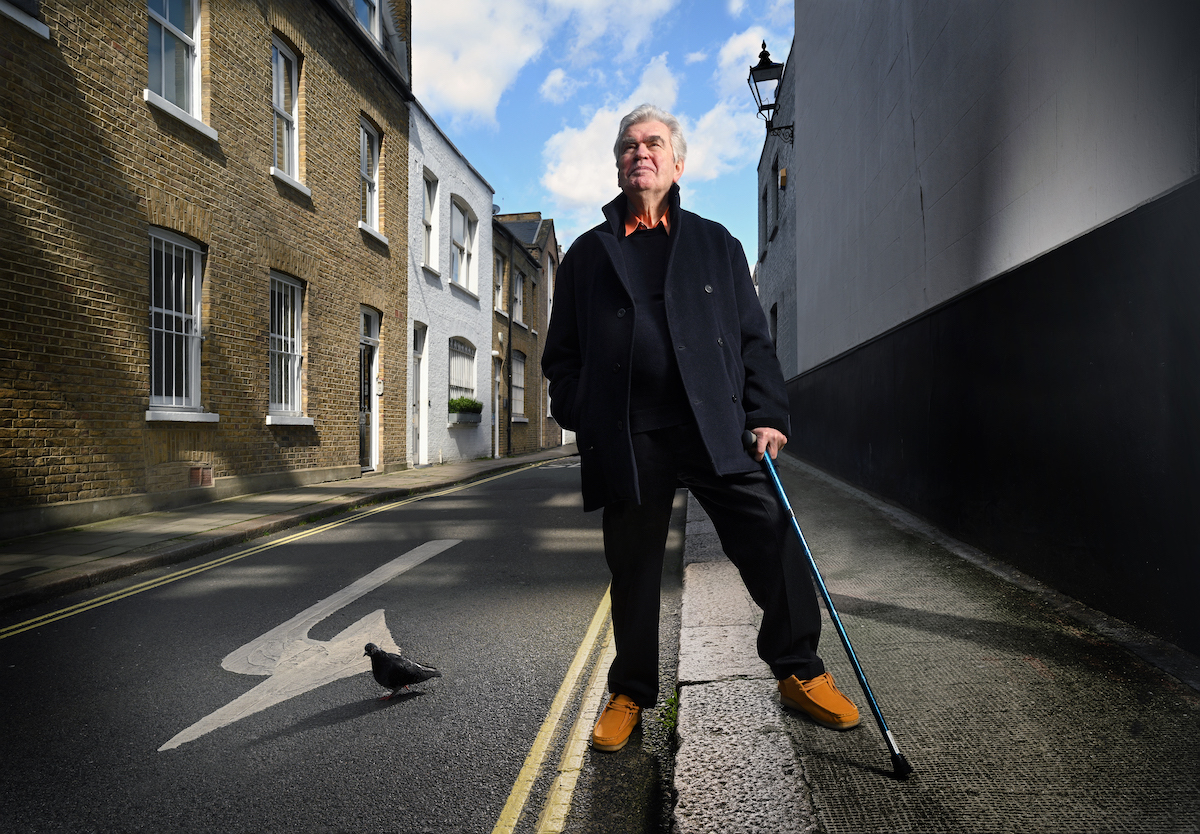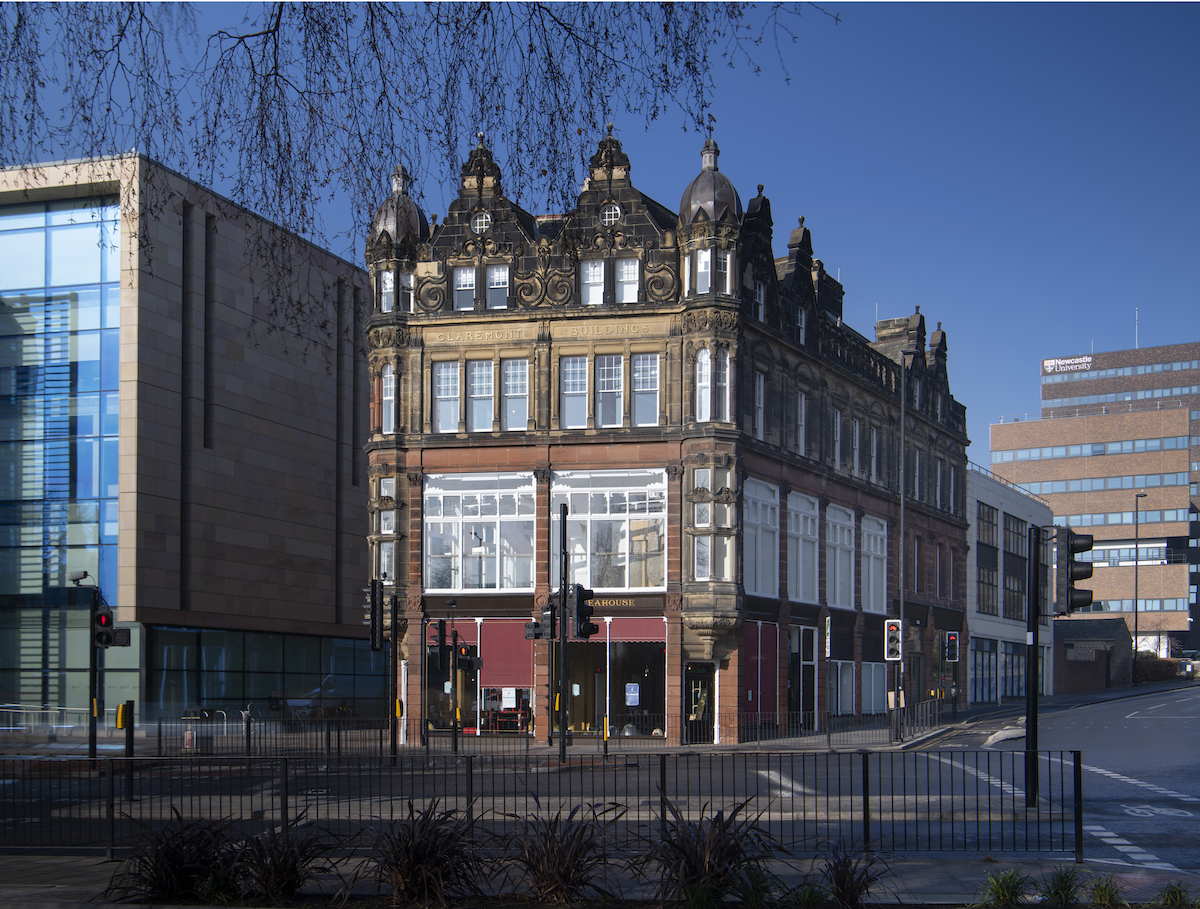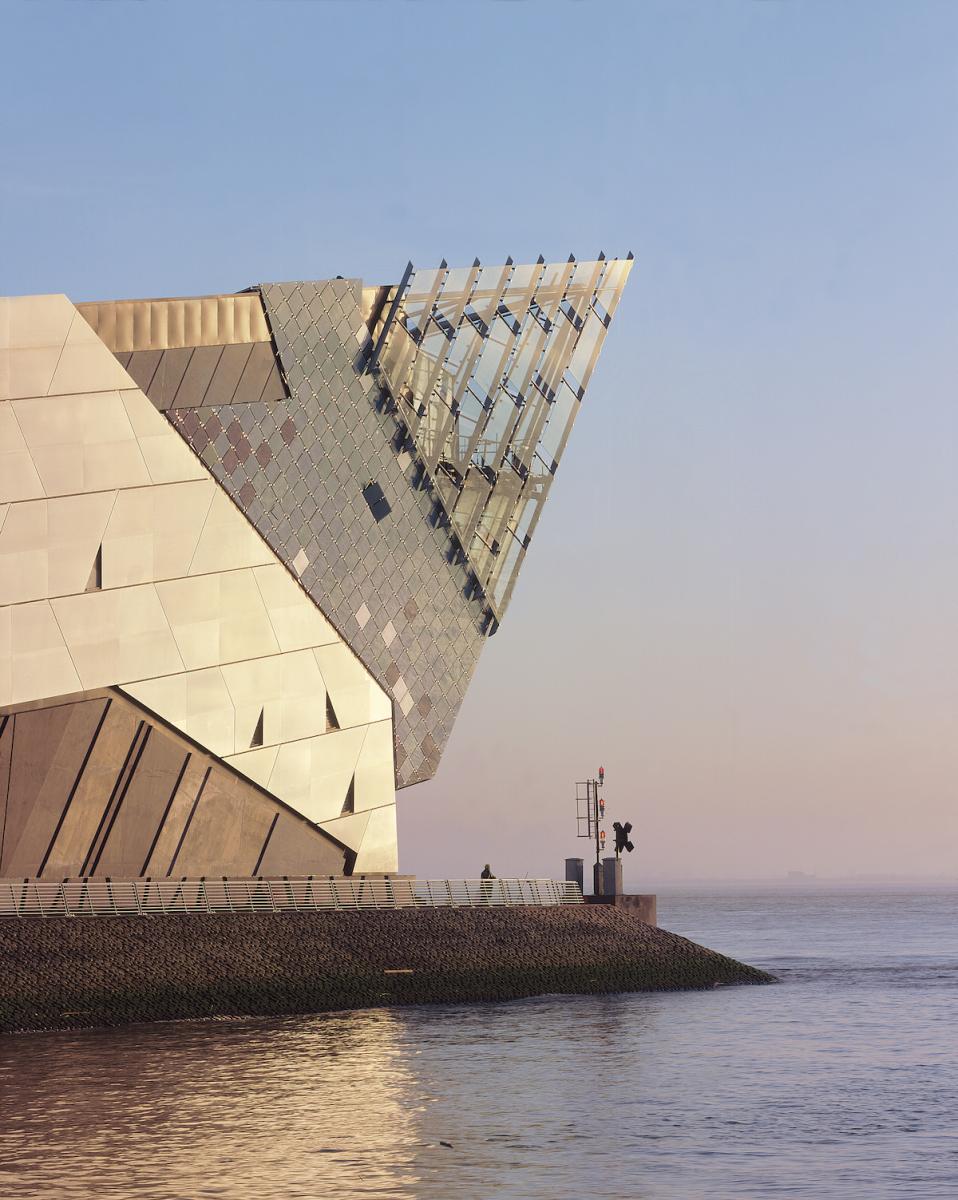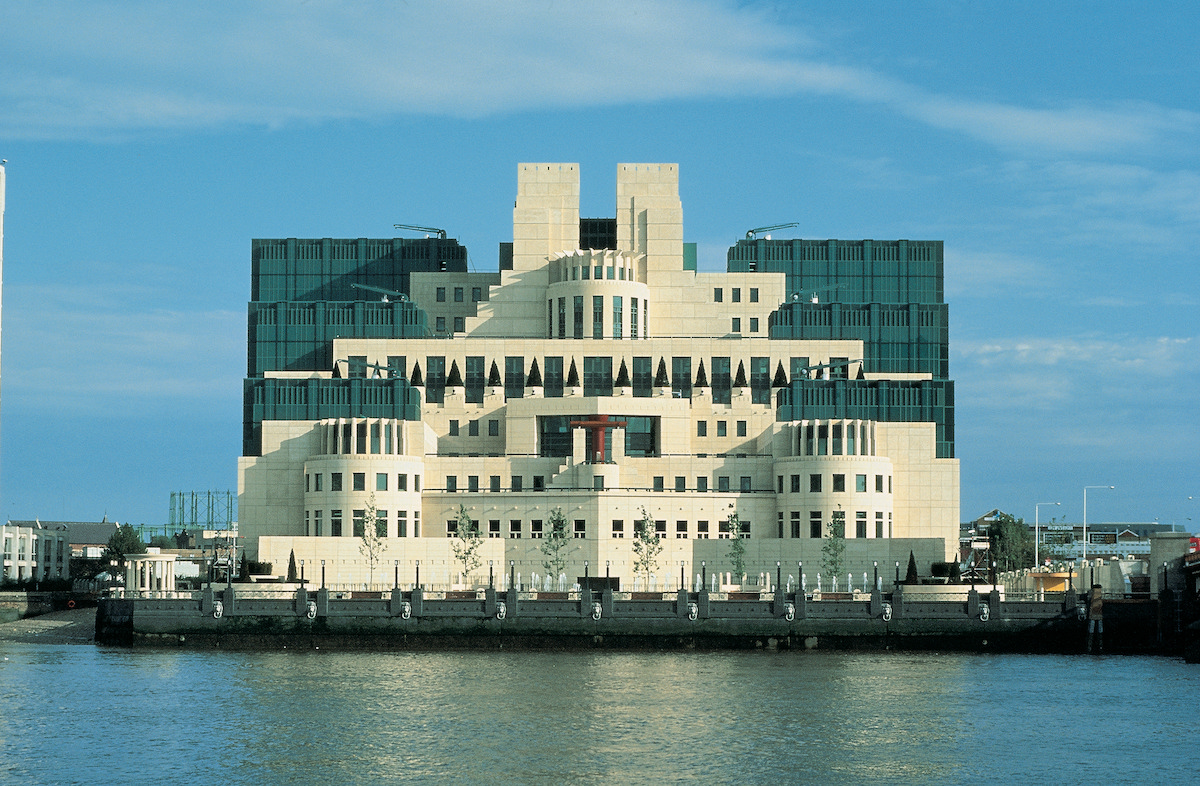This wonderful Cornish workshop and museum is dedicated to the legacy of studio pottery trailblazer Bernard Leach
Architect and master planner Sir Terry Farrell on Postmodernism, class and his brilliant new project
Architect and master planner Sir Terry Farrell on Postmodernism, class and his brilliant new project
27 Jun 2023
Sir Terry Farrell is behind a newly opened hub in Newcastle upon Tyne that wants us all to be part of the debate around architecture and cities. It’s about our collective futures, he tells Grant Gibson
 Sir Terry Farrell pictured in London. Portrait: John Millar
Sir Terry Farrell pictured in London. Portrait: John Millar
This wasn’t how it was supposed to go.
Sir Terry Farrell has just started interviewing me and manages to find my soft spot instantly. ‘What school did you go to?’ he asks, an eyebrow slightly but noticeably arched.
I hesitate for a moment, slightly confused at how we got here. After all, it’s my job to ask the questions. I’m also aware he’s unlikely to approve of my background. In the opening page of his recent autobiography, he makes it crystal clear where he stands, taking aim at the class system.
‘It makes us poorer culturally and economically,’ he states. ‘One thing I have learned is that we should make it easier for the aspiring child, because all too often society is not fair and not remotely equal.’
What shines out from his book – and our interview – is that Farrell is a man who prizes his independence above all else. Despite receiving a knighthood in 2001, you sense the architect and master planner, renowned for projects such as Charing Cross (Embankment Place), MI6 headquarters and TV-am, Greenwich Peninsula, Newcastle’s Quayside and Paddington Basin – as well as Seoul’s Incheon Airport, South Korea, and The Deep in Hull – felt he never quite fitted into his chosen profession.
The working-class boy from Manchester (and later Newcastle), whose own father left school aged 14, found himself surrounded by former public school pupils in his professional life and it has left an indelible mark. Hence my nervous smile as I splutter that I went to ‘one of those minor public schools you don’t approve of, Terry’, before going on to explain my own misgivings with the system.
Satisfied that he knows a little more about me, the normal pattern of an interview resumes.
 The new Farrell Centre, Newcastle upon Tyne. Image: Courtesy of the Farrell Centre
The new Farrell Centre, Newcastle upon Tyne. Image: Courtesy of the Farrell Centre
Ostensibly, we’re meeting to chat about a new building in Newcastle that bears his name. The Farrell Centre, part of Newcastle University and housed in a restored four-storey Victorian building in the city centre, has a clear aim: to widen the debate around architecture through innovative exhibitions, public talks and debates, and workshops and activities for young people and schools.
The project was inspired by the architect’s recommendation in the 2014 government-commissioned Farrell Review: that every city should have an ‘urban room’, where local people can learn about the past, present and future of where they live.
The £4.6m building scheme was part funded – to the tune of £1m – by a donation from the Terry Farrell Foundation; Farrell also gave his extensive practice archive to the university in 2018.
According to director Owen Hopkins, ‘the centre is focused on the local situation, but it’s also interested in connecting that to broader debates, themes and ideas – situations that are taking place regionally, nationally and globally’.
To prove his point, the first exhibition, More with Less: Reimagining Architecture for a Changing World, investigates the relationship between architecture and sustainability.
The project is predicated around a sense of democracy. ‘We won’t be succeeding if our audience isn’t representative of the public at large,’ Hopkins tells me. And when I ask Farrell himself who he would like to see use the building, he says succinctly: ‘Ideally people from my background. That’s all I can say.’ Which, of course, brings us back to class.
 The Deep, Hull, the landmark aquarium designed by Sir Terry Farrell. Image: © Farrells
The Deep, Hull, the landmark aquarium designed by Sir Terry Farrell. Image: © Farrells
You fancy Farrell’s desire to swim against the tide is what led him to the architectural style with which he is (rightly or wrongly) most associated: Postmodernism.
‘I was reacting counter to received wisdom,’ he tells me. His ‘received wisdom’ was the High Tech Movement propagated by the likes of Norman Foster, Richard Rogers, Michael and Patty Hopkins, and his erstwhile partner Nicholas Grimshaw. He had once been considered one of their number but split decisively. ‘It was cold, calculating. It was upper class,’ he continues. He warms to this theme at greater length in his book, writing at one point: ‘The intolerant narrow certainty of Modernism was a reaction against Victorian omnidirectional excess. Postmodernism, an era of greater tolerance and pluralism, had its own inbuilt problems but marked the start of a period in which greater fairness and balance were brought to bear on the process of assimilating the work of earlier times.’
At its best Postmodern architecture was (and remains) colourful, fun, unexpected, smart and rich in narrative. ‘Joyful,’ Farrell muses, ‘is an adjective I can relate to.’ In the hands of less skilful or overindulged architects, it was like the built equivalent of Hooked on Classics, a hit LP from the same era that set classical music to a gaudy disco beat.
For Farrell, Postmodernism isn’t so much a style – something it undoubtedly became – but a way of dealing with complexity, a way to talk about history and context in a contemporary manner.
After all, he explains: ‘The ultimate complexity is the city. I was drawn partly as a reaction to the status quo and partly because I was attracted to its non-hierarchical approach.’
I think it’s safe to say that his most prominent London buildings weren’t embraced by the critics, although in more recent years – and partly down to the assiduous work of a handful of architects, such as FAT Architecture and, more recently, Adam Nathaniel Furman, determined to exhume Postmodernism’s reputation – they have been looked upon more generously.
 The MI6 building, London. Image: © Farrells
The MI6 building, London. Image: © Farrells
His MI6 building, in particular, has found a new generation of fans thanks to the Daniel Craig Bond movies, in which it plays a starring role. ‘I think it’s in your face and it’s simplistic on one level,’ he says of the building, ‘and it shines out on another level because it’s complex.’
Meanwhile, he appears sanguine about the changing attitudes to his work: ‘It will go into fashion and out of fashion. And I accept it.’
At points in his career Farrell had little choice but to accept the industry’s ebb and flow. He relates a story from the beginning of the 1990s when journalist and columnist Simon Jenkins said to him: ‘Terry, you have had your turn.’ The commissions in London dried up and his practice was forced to reinvent itself in Southeast Asia, which it did rather spectacularly. ‘I think it confirms the view that it’s all fashion,’ he says a little wistfully. ‘I was disheartened, but I sorted it with Hong Kong.’
Around the turn of the millennium, a disillusionment with architecture set in – as the field spewed out a handful of superstars, each asked to brand cities across the globe with their particular aesthetic. ‘I decided this wasn’t for me: it was all going in the wrong direction and had become more haute couture than high street,’ he writes. Instead, he became more interested in masterplanning.
Is that where the power really lies? ‘Yes, there’s more mileage in planning and reconstructing cities, learning how we used to live and how we live now, and how it lays out lessons for the future.’
All of which begs the question about what state he believes architecture is in today?
These are challenging times for the construction industry, which is responsible for a little under 40% of our carbon emissions and is dealing with its own lack of diversity. ‘Architecture isn’t in a good place,’ Farrell retorts. ‘It’s still for the privileged few, but it tries, at least it tries.’ The Farrell Centre promises to be at the forefront of this change.
SEE
More with Less: Reimagining Architecture for a Changing World
Farrell Centre, The Sir Terry Farrell Building, Newcastle upon Tyne
Until 10 September; farrellcentre.org.uk
About the Author
Grant Gibson
is a design, craft and architecture writer and runs the award-winning podcast Material Matters
JOIN OUR MAILING LIST
Become an instant expert!
Find out more about the arts by becoming a Supporter of The Arts Society.
For just £20 a year you will receive invitations to exclusive member events and courses, special offers and concessions, our regular newsletter and our beautiful arts magazine, full of news, views, events and artist profiles.
FIND YOUR NEAREST SOCIETY
MORE FEATURES
Ever wanted to write a crime novel? As Britain’s annual crime writing festival opens, we uncover some top leads
It’s just 10 days until the Summer Olympic Games open in Paris. To mark the moment, Simon Inglis reveals how art and design play a key part in this, the world’s most spectacular multi-sport competition



